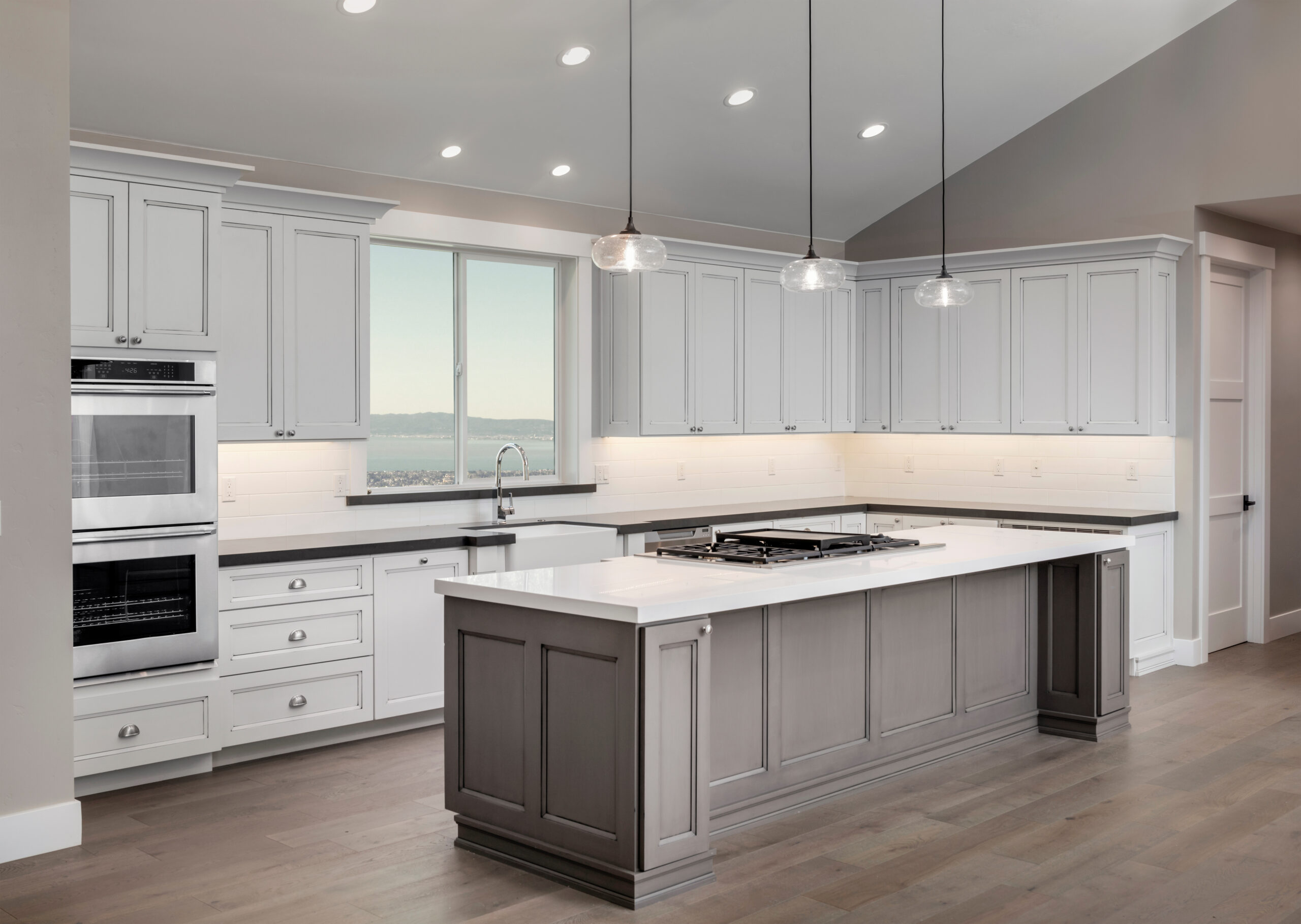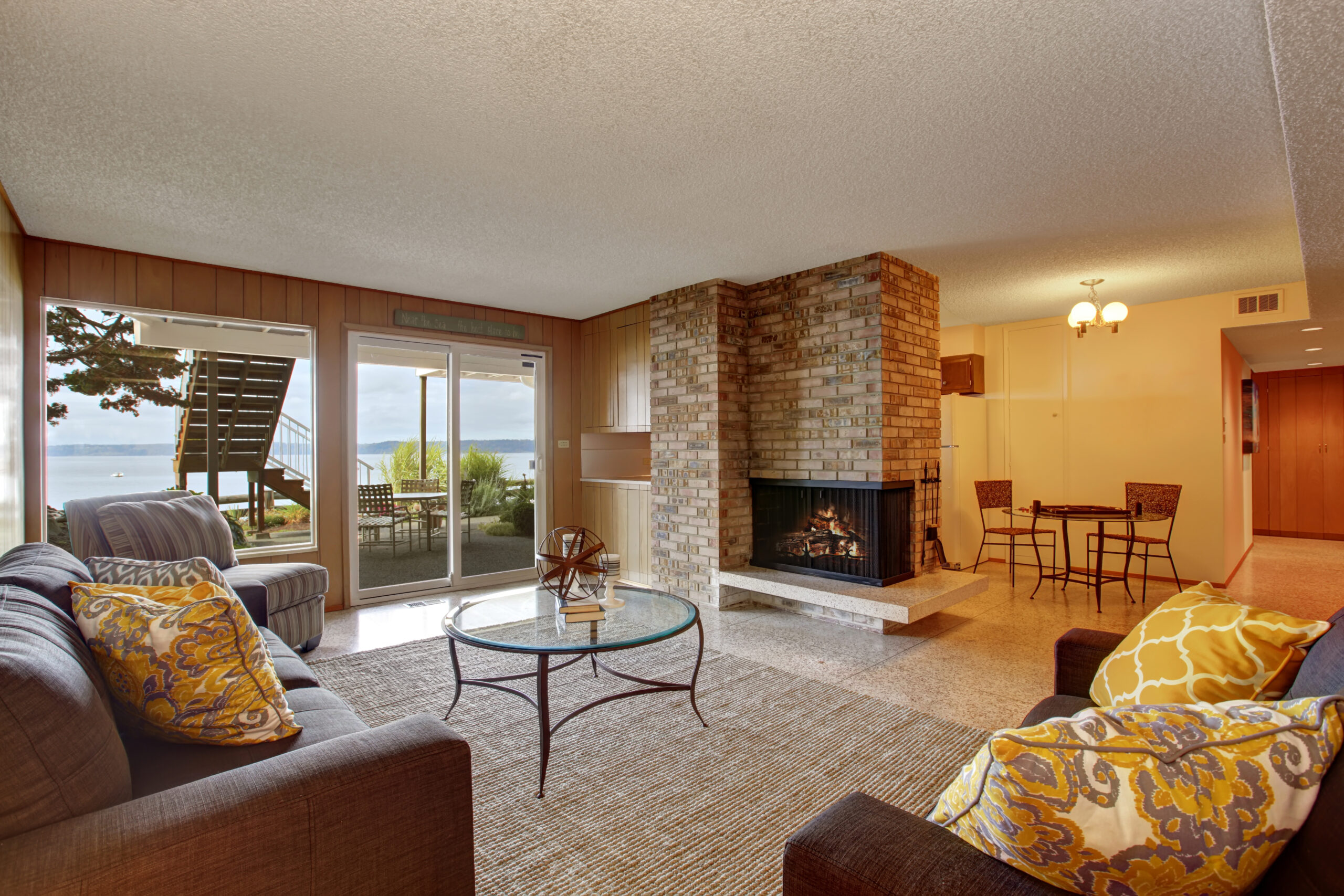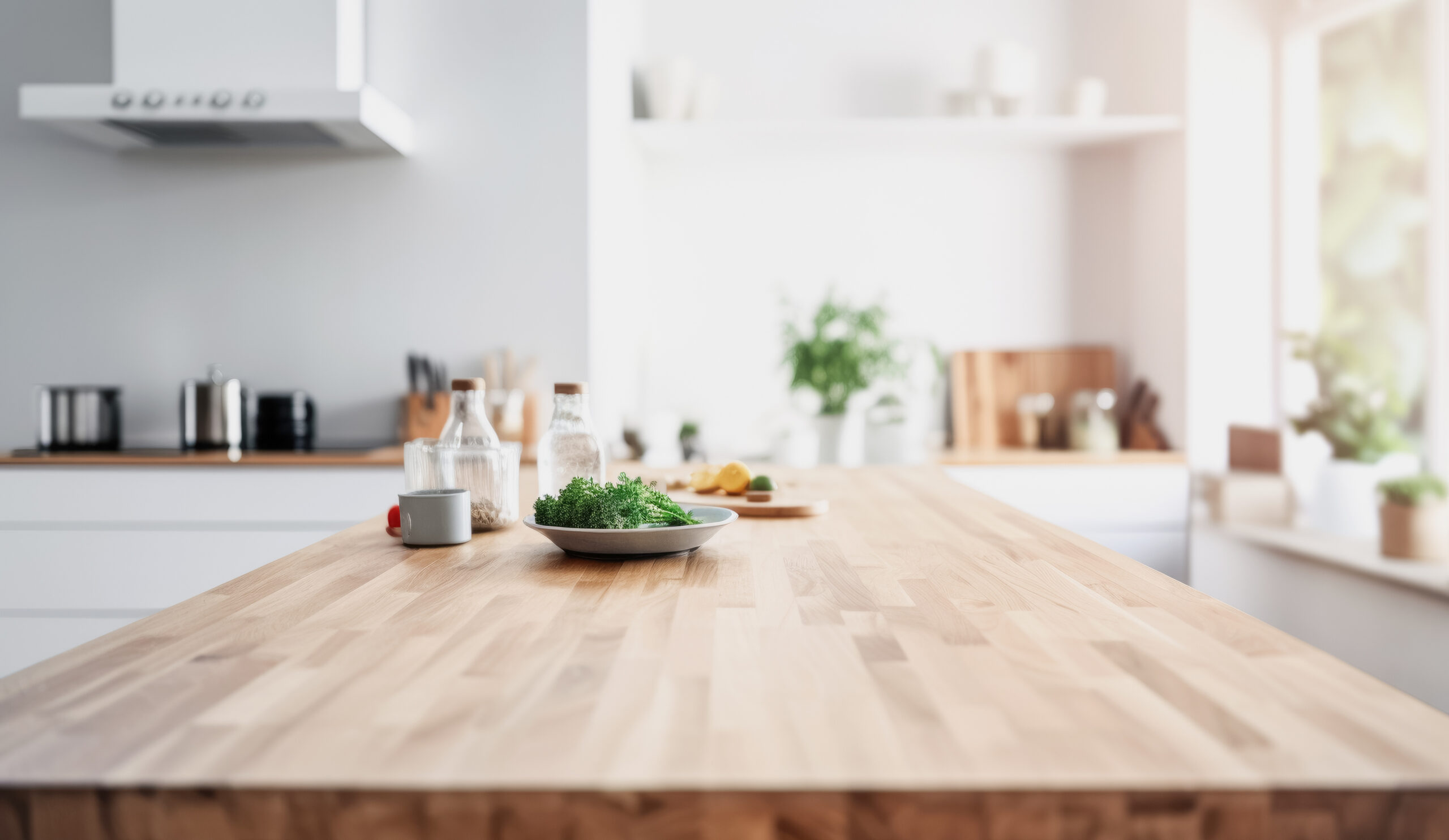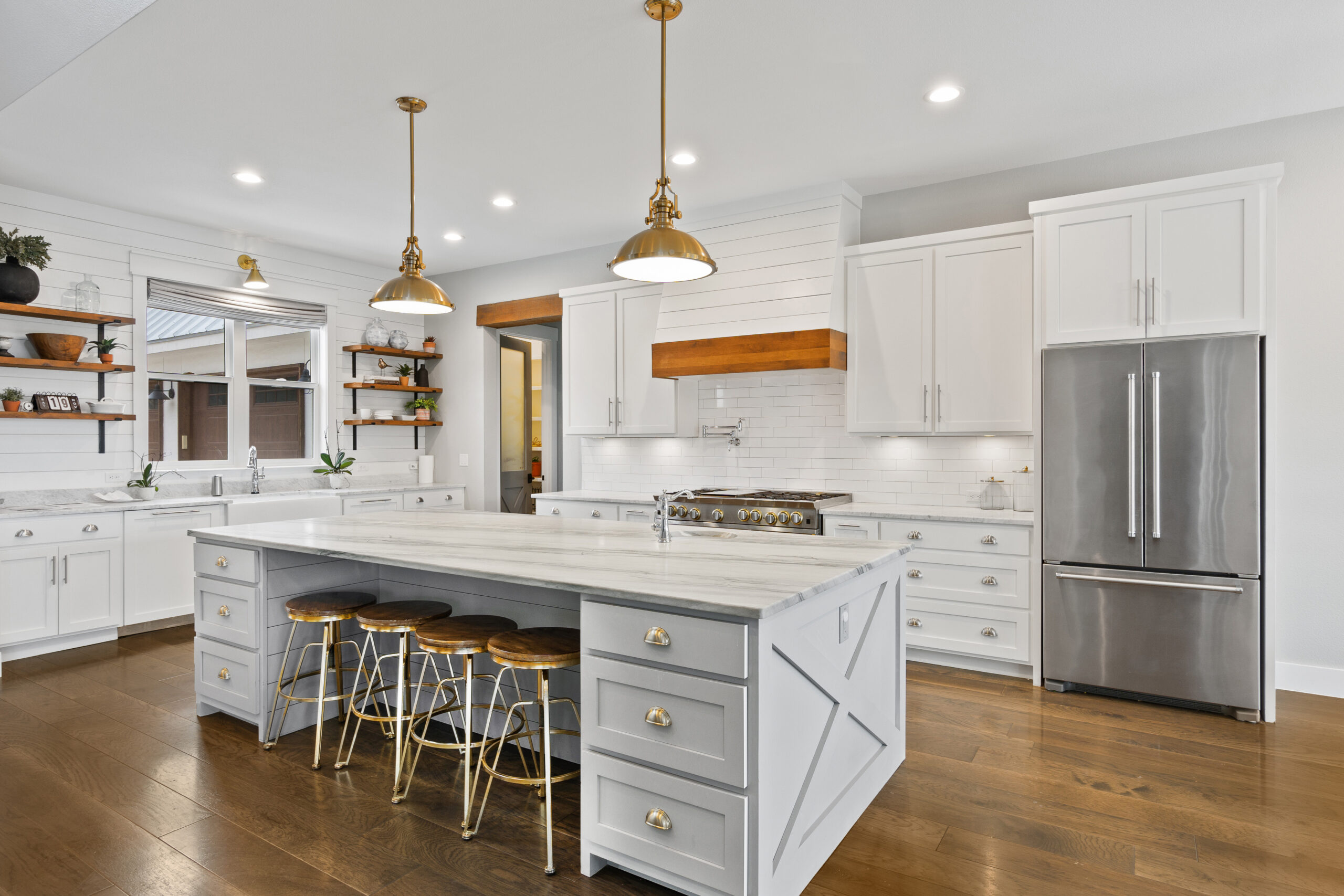
Frameless vs face frame cabinets: compare storage space, hinge options, and door reveals to choose the best layout for your kitchen. See pros and cons and decide now.
Choosing between frameless vs face frame cabinets sets the tone for how your kitchen looks, feels, and functions. Both construction styles can be built to a high standard, both can look stunning, and both can last for decades. The difference comes down to how the cabinet box is built, how the doors are mounted, and how much interior space you gain. At Redleaf Renovations, we design and install both styles using high-quality materials and Amish-built cabinetry, so we can help you match the right build to your home, lifestyle, and budget.
What Frameless and Face-Frame Mean
Cabinets are more than doors and drawers. The cabinet box and how the door attaches change everything from storage to style. Here is how each style works.
- Frameless cabinets: Often called European-style, the doors and drawers mount directly to the sides of the cabinet box. There is no front frame. Sides are typically 3/4 inch thick to keep the box strong. Door overlays are usually larger, resulting in tight, even reveals.
- Face-frame cabinets: A solid wood frame is attached to the front of the box. Doors and drawers mount to the face frame. The frame adds rigidity and creates a traditional look. Part of the frame is visible unless you choose inset doors.
Both construction styles can be built in custom sizes, and both can be finished with modern or classic door styles. Redleaf Renovations partners with skilled Amish shops that craft either style with fine joinery and durable finishes.
Storage Space: How Much Can You Gain
Why frameless often stores more
Many homeowners choose frameless cabinets for the extra interior room. Without a face frame, the door opening is wider and drawers can be designed a bit larger. This is most noticeable in narrow cabinets where every inch counts. The result is easier access to roll-out trays and a small bump in usable capacity.
How much more space can you expect? In many layouts, frameless cabinets provide roughly 8 to 15 percent more usable drawer width compared to a similar face-frame cabinet. Shelves can also feel roomier because there is no frame edge at the front to catch dishes or containers. Your actual gain depends on your cabinet widths, hardware, and the builder’s construction standards.
Simple storage math example
Imagine a 24 inch base cabinet with 3/4 inch sides and standard drawer slides. In a frameless build, the interior width for a drawer box might be about 21 inches after you account for side thickness and slide clearances. In a face-frame build with 1.5 inch wide stiles, the opening often narrows by about 1 to 1.5 inches, so a similar drawer box might be closer to 19.5 to 20 inches wide. That 1 to 1.5 inch difference adds up across a bank of drawers. Over five or six cabinets, you can gain the equivalent of an extra drawer’s worth of storage.
- Small kitchens benefit most from frameless storage gains.
- Pull-out spice racks, trash pull-outs, and narrow tray dividers are easier to size in frameless cabinets.
- Corner solutions like blind-corner pull-outs can gain smoother access in frameless builds.
When face frame can still win
Face-frame cabinets can be tailored to maximize storage as well. A skilled shop can slim stile widths, use full-overlay doors, and select slim hardware to recapture space. In tall pantry cabinets, the added rigidity of a face frame can help keep large openings square over time. With high-quality Amish-built face-frame cabinets from Redleaf Renovations, you can still achieve excellent access and long-term stability.
Hinge Options and Performance
Hinges affect how the doors look and how they move. Your choice also influences how much of the cabinet you can see and how easy it is to adjust doors after installation.
Common hinge types you will consider
- European concealed hinges: These are hidden when the door is closed and are standard on most frameless cabinets. They offer smooth action and easy adjustment.
- Face-frame concealed hinges: Similar function to European hinges but designed to mount to a face frame using a plate or adapter.
- Overlay hinges: These control how much the door overlaps the cabinet. You will see terms like partial overlay and full overlay.
- Inset hinges: Used when doors sit flush inside the frame opening. Can be concealed or decorative butt hinges.
- Soft-close hinges: Built-in dampers gently close the door. These are standard on most high-quality installations by Redleaf Renovations.
- Specialty hinges: Options for corner bi-fold doors, wide-angle 155-degree hinges for deep pull-outs, and pocket-style hinges for appliance garages.
Adjustability and durability
Most modern concealed hinges provide three-way adjustment: up and down, left and right, and in and out. This makes it easier to achieve even reveals and correct door alignment after the cabinets acclimate to your home. Frameless cabinets often use clip-on hinges with separate mounting plates that can be swapped for different overlays later, which is helpful if you change door styles. Face-frame cabinets can use similar hinges, but the plate must match the frame depth and style.
Durability comes from quality hardware and good installation. At Redleaf Renovations, we spec premium hinges with strong springs and consistent soft-close action. For heavy doors like tall pantry doors or glass inserts, we add extra hinges to distribute weight. This attention to detail prevents sagging and keeps reveals true.
Special cases to plan for
If you plan to mount LED lighting inside cabinets, choose hinges that open wide enough to clear fixtures. For corner cabinets with bi-fold doors, use matched hinge sets to keep the joint tight. If you want thick doors or applied moldings, confirm the hinge cup depth and overlay support. Our team checks these details up front during the design process so you never end up with doors that bind or hit adjacent walls.
Door Reveals: The Look and the Function
What is a reveal
The reveal is the gap or shadow line you see around the door and between pairs of doors. Reveals affect the finished look, how easy it is to clean, and how forgiving the layout is to seasonal changes in humidity. Tight, even reveals feel modern. Slightly larger reveals highlight craftsmanship and frame detail.
Typical reveal ranges
- Frameless with full overlay: Tight, uniform reveals around 1/16 to 1/8 inch. This creates a sleek, continuous feel across cabinet runs.
- Face-frame with full overlay: More of the frame is covered, but a portion remains visible. Reveals often show 1/4 to 1/2 inch of frame depending on design goals.
- Inset doors: The door sits inside the frame opening with a fine reveal, often about 1/16 inch. The look is classic and precise.
How reveals affect cleaning and alignment
Tighter reveals look crisp but demand more precise installation and stable materials. Frameless cabinets with full overlays excel at this. In older homes where walls are not perfectly straight, face-frame cabinets can be more forgiving, since the frame provides a buffer to hide minor wall irregularities. From a cleaning standpoint, larger reveals and exposed frames can collect a bit more dust at the edges, while tight overlays create a smoother wipe-down surface.
Strength, Durability, and Installation
Strength comes from design, materials, and joinery. Frameless boxes typically use thicker sides, which act like a rigid shell. Face frames add a front beam that resists racking. Both builds are strong when made well. The difference is how that strength shows up in daily use and installation.
For frameless cabinets, the thicker sides provide plenty of bite for hinges and slides. The box edges are finished with durable edge banding. For face-frame cabinets, hinges mount into the frame and slides often connect to both the frame and the box, distributing loads. Amish-built construction from Redleaf Renovations emphasizes tight joinery, solid wood frames, and stable plywood boxes, so both options stand up to heavy family use.
- Site conditions: In out-of-plumb rooms, face frames can be shimmed and scribed to create seamless transitions.
- Long runs: Frameless shines in long, level runs with full overlay doors, giving a furniture-like wall of cabinetry.
- Moisture areas: Quality finishes and sealed edges matter more than frame style. We specify finishes that resist humidity near sinks and dishwashers.
Cost and Lead Time
Cost varies by material, finish, and customization. In many markets, standard semi-custom face-frame cabinets and frameless cabinets are close in price. Fully custom work can swing either way. Frameless may require more precise manufacturing and thicker panels, while face-frame builds have more milling and frame joinery. High-quality hinges and slides are a must for both, and soft-close features are standard in our proposals.
- Budget tip: Use frameless for base cabinets where storage gain matters most, and face-frame uppers if you want visible frames or glass doors.
- Lead time: Amish-built cabinetry from Redleaf Renovations is crafted to order. Plan on several weeks for build time, plus installation and finishing. We set clear timelines at the start of each project.
- Longevity: Spending a bit more on premium hardware and finishes pays off in smoother movement and fewer adjustments over time.
Design Style and Resale
Style carries weight in a kitchen remodel. Frameless cabinets fit minimalist, modern, and Scandinavian looks with slab or simple Shaker doors. Face-frame cabinets lean classic or transitional, especially with inset doors and decorative edges. That said, you can achieve nearly any style with either box construction by choosing the right door profile and overlay.
For resale, consistency with the home’s architecture often matters more than the cabinet construction type. In a mid-century or contemporary home, frameless cabinets feel natural. In an older Craftsman or colonial home, face-frame or inset doors echo the original character. Redleaf Renovations helps align your cabinet choice with your home and neighborhood, including homes in and around Wauwatosa, Wisconsin.
Pros and Cons at a Glance
Frameless cabinet pros
- More usable storage and wider openings
- Sleek, tight reveals for a modern look
- Excellent access for roll-outs and organizers
- Flexible hinge overlays and easy adjustability
- Works well with full-height, furniture-like runs
Frameless cabinet cons
- Demands precise installation for perfect reveals
- Edge banding quality is critical to long-term durability
- Less forgiving in very out-of-square rooms
Face-frame cabinet pros
- Classic look with visible frames or inset doors
- Rigid front frame can help keep openings true
- Forgiving in older homes with uneven walls
- Traditional detailing options like beaded frames
Face-frame cabinet cons
- Slightly reduced drawer width and opening size
- More visible reveals unless using full overlay or inset
- Hinge selection more limited for extreme overlays
Which Should You Choose
- Define your style: modern and seamless often points to frameless, while classic and detailed points to face frame.
- Measure your storage needs: if you need every inch, frameless can help, especially in small kitchens.
- Consider your home: older homes with character may favor face-frame or inset for a period-correct look.
- Think about hardware and organizers: talk through trash pull-outs, spice racks, tray dividers, and corner storage so the cabinet style supports them.
- Set a realistic budget: compare both options with the same hardware, finish, and door style to see true costs.
- Plan installation: discuss wall conditions and reveal preferences to ensure a clean fit and finish.
Redleaf Renovations guides you through each step with clear drawings, hardware schedules, and finish samples. We take field measurements, check wall conditions, and confirm your reveal preferences so your kitchen performs and looks the way you expect.
Real-World Examples from Redleaf Renovations
In a compact kitchen remodel near Wauwatosa, a homeowner wanted more storage without changing the footprint. We recommended frameless base cabinets with full overlays, deep drawers, and a slim double trash pull-out. The change provided wider drawer boxes and easier access at corners. For wall cabinets, we used lift-up doors above the sink with concealed supports and soft-close hinges. The result was a clean, modern look with an obvious space gain.
In a classic bungalow, the client wanted to protect the home’s character. We recommended face-frame cabinets with inset Shaker doors and beaded frames. The visible frame lines matched the period trim work, and the inset reveals showed true craftsmanship. Inside, we spec’d full-extension soft-close slides and pull-out trays to keep function high. The best of both worlds came together: timeless style and modern convenience.
FAQs
Can I mix frameless and face-frame cabinets in one kitchen
Yes, and it can be a smart approach. You might choose frameless for base cabinets to maximize drawer width, and face-frame for uppers with glass doors or decorative frames. The key is coordinating finishes, door styles, and reveals so the space feels intentional. Redleaf Renovations can design mixed systems that look seamless.
Do frameless doors sag over time
Not when built and installed correctly. Quality hinges, proper screw engagement, and correct door count per opening prevent sag. We often use 110- to 155-degree hinges on tall doors and add a fourth hinge where weight calls for it. Occasional adjustments are easy with three-way adjustable hinges.
Are Amish-built cabinets always face frame
No. Many Amish shops specialize in face-frame cabinetry, but many also craft excellent frameless boxes with precise edge banding and modern hardware. Redleaf Renovations works with Amish builders who deliver both styles with consistent quality and fine finishes.
Can I reface my existing face-frame cabinets to look frameless
You can reface to update doors and finishes, but converting face frame to a true frameless system is not practical. The cabinet structure and hinge mounting are different. If you want the frameless look and storage benefits, a new cabinet install is the right path.
Which style is easier to clean
Frameless full-overlay doors create smooth planes that are quick to wipe down. Face-frame cabinets have more edges that can gather dust. That said, a quality topcoat on either style makes cleaning simple.
Will frameless cabinets handle heavy countertops
Yes. Properly built frameless boxes with 3/4 inch sides and secure wall mounting easily support quartz, granite, and other heavy tops. We also add reinforcements where sinks or appliances need extra support.
Your Next Step with Redleaf Renovations
There is no one-size-fits-all answer in the frameless vs face frame cabinets debate. The right choice depends on your space, your style, and how you cook and live. Redleaf Renovations has delivered personalized remodeling services since 2011, and our team takes pride in craftsmanship, clear communication, and thoughtful design. Whether you want sleek European-style cabinets or classic framed and inset doors, we will build a plan that fits your home and your goals. If you are planning a kitchen remodel in Wauwatosa or nearby communities, we would love to help you compare layouts, hardware, and door reveals. Our Amish-built cabinet partners, careful installation, and attention to detail ensure your new kitchen looks beautiful and works even better. Let us bring your vision to life with cabinetry that is designed around the way you live.




